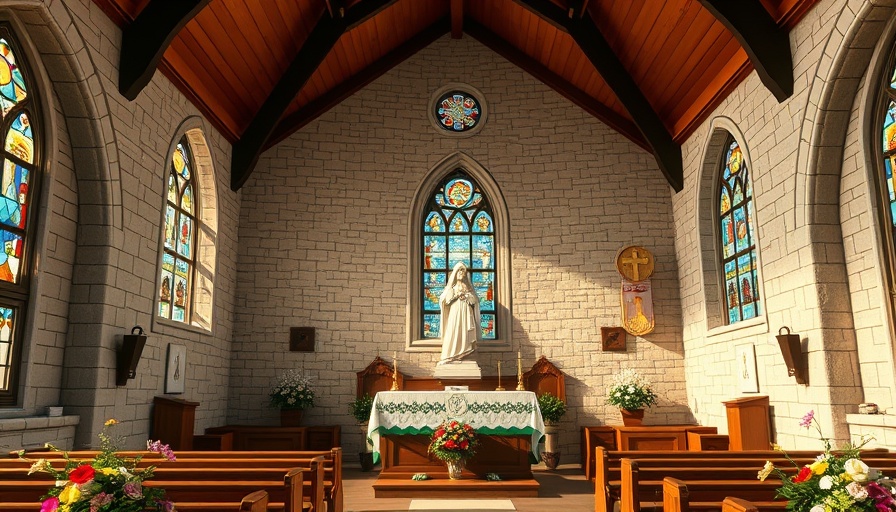
From Devastation to Inspiration: The Story of the Grasshopper Chapel
In the 1870s, the Midwest faced unimaginable destruction as swarms of Rocky Mountain locusts ravaged crops and farms. This historical calamity, often deemed a biblical plague, ultimately led to the creation of a remarkable sanctuary, the Assumption Chapel, affectionately known as the "Grasshopper Chapel," located in Cold Spring, Minnesota.
The Devastating Grasshopper Plague
The grasshopper plague began in 1873 and lasted for five long years, devastating agricultural lands and upending the livelihoods of countless farmers. Reports indicated that these relentless pests didn’t just consume crops; they mercilessly devoured everything in sight, from fruit to clothing. One vivid story recalls a farmer who hung his jacket on a fence post only to return to find it reduced to mere buttons by the voracious insects.
To combat this unprecedented invasion, farmers resorted to extreme measures. They dug pits, filled them with coal tar, and set them aflame in an effort to rid their fields of the pests. Innovations like the ‘hopper dozer’ were developed—metal sheets coated in sticky tar or molasses that trapped grasshoppers as they were dragged through the fields. Despite these attempts, other than momentary relief, the locusts showed little sign of retreating, causing widespread despair.
The Birth of a Sanctuary
Amidst this turmoil emerged the community's spirit and resolve. In August 1877, after five years of strife, the Assumption Chapel was constructed. Originally a modest wooden structure, this chapel symbolized hope and resilience for the local populace. Built on a hill, it was a place not just to pray for relief from the plagues, but a manifestation of the people’s determination to overcome adversity.
The place of worship eventually evolved into a beloved local icon, with its hand-carved wooden statue surviving a tornado in 1894. Today, visitors flock to the Grasshopper Chapel not only to admire its historical architecture but also to connect with the resilient spirit of the farmers who built it.
Legacy and Modern Reflection
As we reflect on this local story, it serves as a reminder of the strength of community and faith in the face of overwhelming challenges. The tale of the Grasshopper Chapel illustrates how people can rise from disaster to forge a legacy of hope. Just like the farmers of Cold Spring, we too can learn to build our sanctuaries, both physically and spiritually, in our lives, making peace with our past tribulations.
Takeaway: Building Strength from Difficult Times
The struggles faced by the farmers in the 1870s are not only a part of Minnesota's agricultural history but also offer valuable lessons on resilience. When faced with your own grasshopper plagues, remember the ways communities come together to find strength and comfort.
Visiting the Grasshopper Chapel could inspire reflections on your challenges, making you appreciate the journey toward creating your own sanctuary in life. As you ponder this story, consider visiting local historical spots that celebrate resilience and community spirit.
 Add Row
Add Row  Add
Add 




Write A Comment